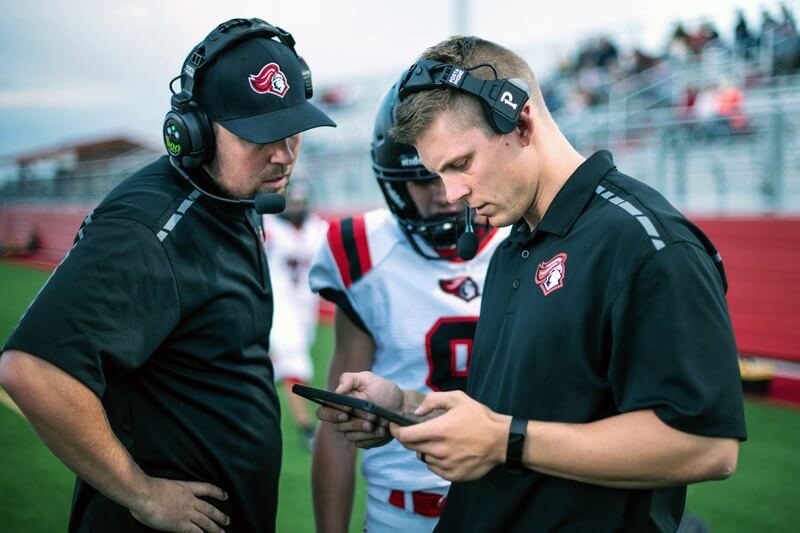
Crisis Management as a collaborative effort
Now more than ever, crisis management is a team sport. Gone are the days when one division or emergency team could manage a major event on its own. What has emerged from COVID is that it takes an aligned organization to overcome a crisis. Most current crisis management literature focuses on communication teams and limiting reputational damage. And although those aspects are essential, they are only one crucial part of a crisis response.
In many organizations, large and small, people can often get defensive of their department. They protect their area, whether physical or cyber security, internet technology, business continuity, or risk management. Regardless of the domain area, the study of recent threats and events shows us that a business cannot effectively rely on one area’s crisis team to bring them through an event. Instead, it is proving to be much more effective for disparate crisis teams to join together to accurately understand, mitigate, and assist the organization in recovery from incidents.

Why a cross-functional team is effective
Some may question why a crisis team with cross-functional membership works. The alternative is for domain owners to resolve their issues alone. Indeed, it is a valid point, and for many low and medium-level risk incidents, this is very much the case. For lower-level events, it makes sense not to drain resources from daily tasks. It is also simply that many events do not have a widespread impact, so it is better to engage those with a need to know or directly support resumption.
However, high impact and catastrophic level events are another matter. Events at that level have a much greater chance of impacting business across multiple domains and ultimately operations as a whole. Bringing together experts with diverse experience allows the response group to see risks and opportunities from different angles to generate new solutions and adapt dynamically to changing situations. Significant crisis events resolved in the vacuum of a single department have embedded threat rigidity built into its organizational structure. So, like any sports team, your crisis team is made up of members with specializations and takes on roles that support overall success.

Crisis management strategy
My experience is that risk may start in one area, but often the impact spreads across multiple domains–business continuity, security, IT, and cyber security. Having a crisis management strategy is crucial to address this. This strategy should be multipronged and does not start with a crisis management team. Instead, it begins with intel and constant monitoring of risk. Next, a solid strategy should outline how and when your subject matter experts come together to respond to a crisis and what ongoing efforts benefit readiness.
These types of engagement should not be surprising. The best preparedness efforts include education, team exercising, governance, planning, and frequent consultation. These practices apply to crisis teams responding to emergency events and hold for an enterprise-wide mindset. In their article, 7 Strategies for Promoting Collaboration in a Crisis, published in the Harvard Business Review, authors Heidi K. Gardner and Ivan Matviak “highlight the importance of effective collaboration for long-term commercial success.” So, encouraging strategic thinking is valuable, but implementing an agile plan of action is critical.

Create a solutions team
When a high-risk crisis occurs, it is vital to gather your collaborative team. Structurally, it is best to head up an agile, small team to manage the situation. They should have the authority to act from management. Long before the event, leadership should have committed to who is on the team. As part of your strategy, member roles should be transparent regarding purpose and function in assessing the problems. Members should also be willing to try new solutions and be inventive in their approach to problem-solving.
The challenge of crisis response is that, by nature, most people and organizations are risk-averse. In a crisis, this behavior becomes compounded. People fall back on what they know. Implementing a crisis strategy is helpful as it enforces past training and assists team members in being inventive and flexible. In effect, you want the crisis team to be functioning at the level where they can quickly pivot and ultimately outperform to protect the company. The ability is seen in all highest-performing collaborators during a crisis and is where you want your response team to operate.

Real crisis response
Business continuity, resilience, and crisis management jargon is seeping into the lexicon of our business partners. COVID is a massive influence on operational practices. We don’t want to create an environment where everything is labeled a crisis, and everyone is a first responder. Instead, you want to develop a clear risk map across the enterprise that also brings domains in alignment. It should clearly state when a crisis team is required. Doing this will limit the overlap and churn that often occurs in organizations without a clear crisis plan.
Instead, you aim to create an environment where domain owners want to participate and support crisis response. However, it is helpful that our business partners now understand crisis vocabulary. Having a readiness mindset enables active participation in all phases of the response. Laying the groundwork allows team members and stakeholders to unite in defense of their common interests. Then, by leveraging tactical practices, you protect against self-destructive internal conflicts and ensure the organization is ready for any crisis.

Drafting helps all team members
In cycling, there is a concept that teams create a pelaton to cut the wind or drag for the team leader. It also helps motivate all team members to do their best and conserves energy. Adopting similar techniques across your team is helpful. By delegating tasks and leaning into your members’ expertise, you can preserve the response and prepare for the duration of the event.
Especially with long-tail risk monitoring or incidents, it is vital to remember crisis management is a team sport. You need all team members working together towards the most successful outcomes. Everyone needs to come with their A-Game. As a crisis manager, it is your role to coordinate the response and build a framework that supports having the right people on board. Developing a cohesive structure helps the entire team function at peak strength. A crisis manager is an educator, coordinator, coach, leader, and influencer. However, none of that matters if you do not have team members act together towards the shared goal of protecting the entire organization.

Celebrate success, learn from errors
I’m not the first to write about crisis teams, and I won’t be the last. As leaders in the field, it is essential to constantly learn from other companies’ events, especially those that manage crises well. Additionally, you want to keep a pulse on your company’s needs and be flexible enough to adjust. Because your program did things a certain way in the past does not mean the structure will benefit future events.
Crisis management work is inherently focused on addressing adverse circumstances. With this in mind, it is essential to foster positive relationships. You also want to continually refine your soft skills, be mindful of self-care, and nurture your team. I trust you have the hard skills necessary to do your job, but in today’s evolving landscape, the less well-defined competencies of the role help your program’s success. I encourage you to celebrate the wins but also use a continuous improvement methodology for ongoing program improvement. Go, team!
